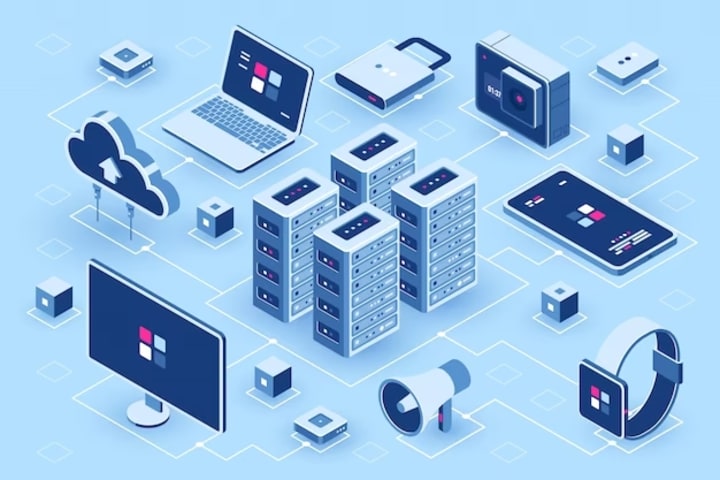What is Cloud Computing? Explain AWS and it's features
what is cloud computing services

Cloud computing is a form of IT services. It provides users with access to data that may be stored in the cloud, such as on Amazon Web Services (AWS). You can use AWS features like elasticity and scalability to expand your storage capacity or processing power in a few simple steps. In addition, you can trust that if one node fails others will take up the slack so your applications won't suffer downtime while they're being restored from backup.
Cloud computing is a form of IT services
Cloud computing is a form of IT services. It's not just the cloud itself, but everything that comes with it; from storage and processing power to application development and management software. This also includes services such as email, social media platforms and search engines.
Cloud computing can be defined as "the delivery of applications, data and other resources over networks by using remote servers hosted off-premise."
Amazon Web Services (AWS) is one of the world's largest cloud computing platforms
AWS is one of the world's largest cloud computing platforms. It was founded in 2006 by Amazon.com as a subsidiary and has since grown to include multiple services and products such as web hosting, database storage, analytics tools and more.

The company operates out of Seattle, Washington — where it was founded — but also has data centers across North America (including Canada), India, Japan and Europe; it also has research & development operations in Silicon Valley.[1]
AWS features include the following:
- Elasticity - The ability to grow or shrink as needed. For example, if your business needs more storage space, you can add it at any time.
- Scalability - The ability to scale up or down depending on demand. This includes automatic provisioning and scaling of resources as needed by customers when they use AWS services like EC2, RDS and S3 (Storage).
- Reliability and security - Security measures such as SSL encryption for data transfers between users or applications on a server with an internet connection through Cloud Front or Route 53; protection against DDoS attacks with CloudFront CDN service; automatic mitigations for known vulnerabilities within software packages hosted in S3 buckets; automatic patching mechanisms built into Linux servers running Ubuntu Linux operating system using RHEL derivatives such as CentOS 7 instead of Red Hat Enterprise Linux 6 which are more likely targets for malware attacks due their popularity among commercial enterprises within global markets."
Elasticity: You can use as much or as little processing power as you need at any given time without having to buy or acquire new hardware.
Elasticity is the ability to scale up or down as needed. For example, if your website needs more processing power at a given time, you can add new servers and have them ready for use in minutes. This allows you to save money by purchasing fewer physical machines (elasticity) than traditional servers would require (non-elastic).

Scalability: You can quickly and easily expand your cloud's storage capacity and processing power as needed.
You can quickly and easily expand your cloud's storage capacity and processing power as needed.
Scalability means you can scale up or down, depending on the project at hand, so that you don't have to buy another entire machine just because you need more RAM or hard drive space.
The AWS Cloud is available in three standard data centers: Northern Virginia, Oregon and Ohio—all within driving distance of many major cities around the world (and each with a different climate).
Reliability and security: If one node fails, others will take up the slack.
AWS’s architecture is fault-tolerant. If one node fails, others will take up the slack. AWS offers multiple data centers in different locations around the world and uses multiple layers of redundancy to ensure reliability and security.

AWS also uses a number of tools and techniques to protect your data from disruptions like hardware failures, natural disasters or hacker attacks (such as encryption). For example:
- You can store your critical business data on separate hardware in each region so that if one region experiences an outage due to a natural disaster or other event outside Amazon's control then you're not affected by that outage at all;
- Your applications run on virtual machines (VMs) which are isolated from each other within an EC2 cluster;
- The VMs have no direct access outside their own VPCs except when they're accessing other applications running inside them via API calls made over HTTPS connections between them;
Use this chart to explain what AWS is
AWS is a cloud computing platform. "AWS" stands for Amazon Web Services, which is the company that provides these services to you.

The main features of AWS are:
- Virtual servers—you can rent virtual servers, storage and other computing resources from AWS by paying a fee per hour or month (or longer). These virtual machines run on physical hardware located in data centers across the world. They're managed by teams who constantly monitor them and make sure they stay up-to-date with security patches and software updates.
- Applications—you can use some of Amazon's APIs (application programming interfaces) to build your own applications that work with their services without having any knowledge about how they work internally. This makes it easy for anyone who wants access to run their own business without needing any special skills because all they need is an internet connection!
Conclusion
All in all, AWS offers a lot of great features that can help you save time and money while working on your project. It also gives you an opportunity to work with other people who have similar ideas and needs too!
About the Creator
Vikas Mishra
Your dreams shape the future, so stop wasting time and go to work!






Comments
There are no comments for this story
Be the first to respond and start the conversation.